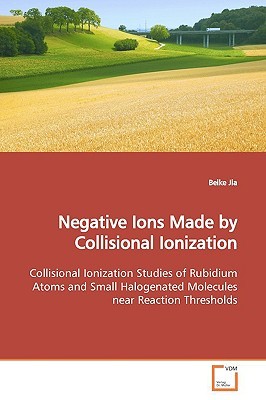
- We will send in 10–14 business days.
- Author: Beike Jia
- Publisher: VDM Verlag
- ISBN-10: 3639153251
- ISBN-13: 9783639153255
- Format: 15.2 x 22.9 x 0.6 cm, minkšti viršeliai
- Language: English
- SAVE -10% with code: EXTRA
Reviews
Description
Negative ions are common in solutions and important in many biological processes, but they are far less well-characterized in the gas phase compared to positive ions. One of the reasons is that it is hard to make a thermodynamically stable negative ion in the gas phase. Directly attaching a low energy electron to a molecule could produce a transient negative ion, which usually autodetaches an electron or fragments to release the excess energy. In this work, alkali metal atoms are used to collide with halogenated molecules in crossed supersonic beams. Electron transfer occurs during the collision and a positive-negative ion pair is produced. The transient negative ion can release part of its excess energy to the alkali positive ion in the form of translation and a stable negative ion could be formed. The energetics of the collision is studied and the electron affinities of the negative ions are measured. This study opens a new pathway to produce negative ions and provides insight into the electron transfer mechanism. It is useful to professionals in the field of gas phase ion chemistry, or anyone else who may be considering utilizing this method to make biological negative ions.
EXTRA 10 % discount with code: EXTRA
The promotion ends in 23d.03:38:44
The discount code is valid when purchasing from 10 €. Discounts do not stack.
- Author: Beike Jia
- Publisher: VDM Verlag
- ISBN-10: 3639153251
- ISBN-13: 9783639153255
- Format: 15.2 x 22.9 x 0.6 cm, minkšti viršeliai
- Language: English English
Negative ions are common in solutions and important in many biological processes, but they are far less well-characterized in the gas phase compared to positive ions. One of the reasons is that it is hard to make a thermodynamically stable negative ion in the gas phase. Directly attaching a low energy electron to a molecule could produce a transient negative ion, which usually autodetaches an electron or fragments to release the excess energy. In this work, alkali metal atoms are used to collide with halogenated molecules in crossed supersonic beams. Electron transfer occurs during the collision and a positive-negative ion pair is produced. The transient negative ion can release part of its excess energy to the alkali positive ion in the form of translation and a stable negative ion could be formed. The energetics of the collision is studied and the electron affinities of the negative ions are measured. This study opens a new pathway to produce negative ions and provides insight into the electron transfer mechanism. It is useful to professionals in the field of gas phase ion chemistry, or anyone else who may be considering utilizing this method to make biological negative ions.


Reviews